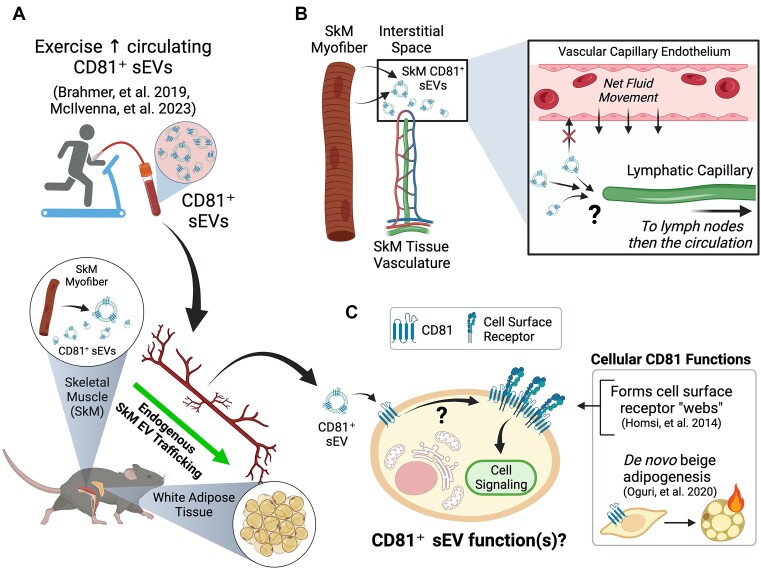Circulating Tetraspanins: From Markers to Mechanisms Driving Systemic Exercise Adaptation.
IF 3.8
Q2 CELL BIOLOGY
Function (Oxford, England)
Pub Date : 2023-09-01
eCollection Date: 2023-01-01
DOI:10.1093/function/zqad048
引用次数: 0
Abstract
Exercise impr ov es cardiometa bolic health thr ough a range of systemic [ie , bey ond w orking skeletal muscle (SkM)] mec ha-nisms typically attributed to small molecules and peptide hormones. Recent discoveries have shown that the abundance and cargo of circulating small extracellular vesicles (sEVs) like exosomes ar e alter ed by exer cise , but linking these c hanges to SkM-deri v ed systemic exercise adaptations has been challenging. A key barrier to linking SkM sEVs to exercise adaptations is determining which of the hundreds of molecules that may be transported by SkM sEVs have functional relevance in the context of exer cise . One surprisingly untested str ate gy is to start with the most abundant sEV car go . Tetraspanins like CD81 are tr ansmembr ane protein hallmarks of sEVs. To date, CD81 has only been described as an sEV marker, not an instrument of sEV function. However, ∼ 30 yr of resear c h has established CD81 as a tr ansmembr ane adaptor protein that influences a variety of cellular functions by altering the organization of r ece ptor pr oteins within membranes. Multiple groups

循环四合蛋白:从标记物到驱动系统运动适应的机制。
本文章由计算机程序翻译,如有差异,请以英文原文为准。
求助全文
约1分钟内获得全文
求助全文

 求助内容:
求助内容: 应助结果提醒方式:
应助结果提醒方式:


